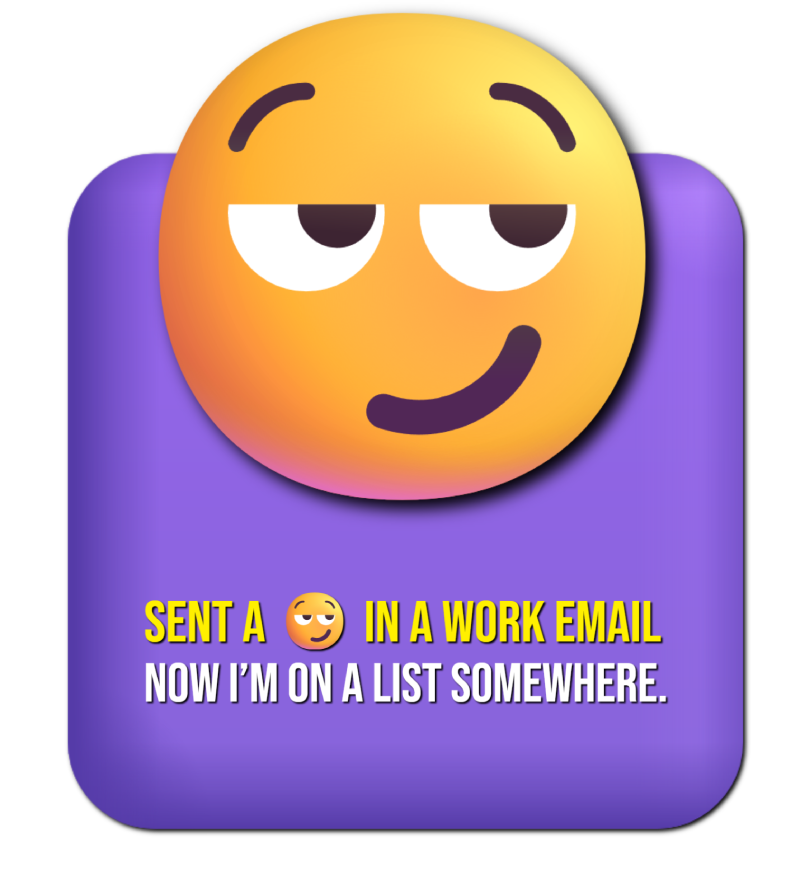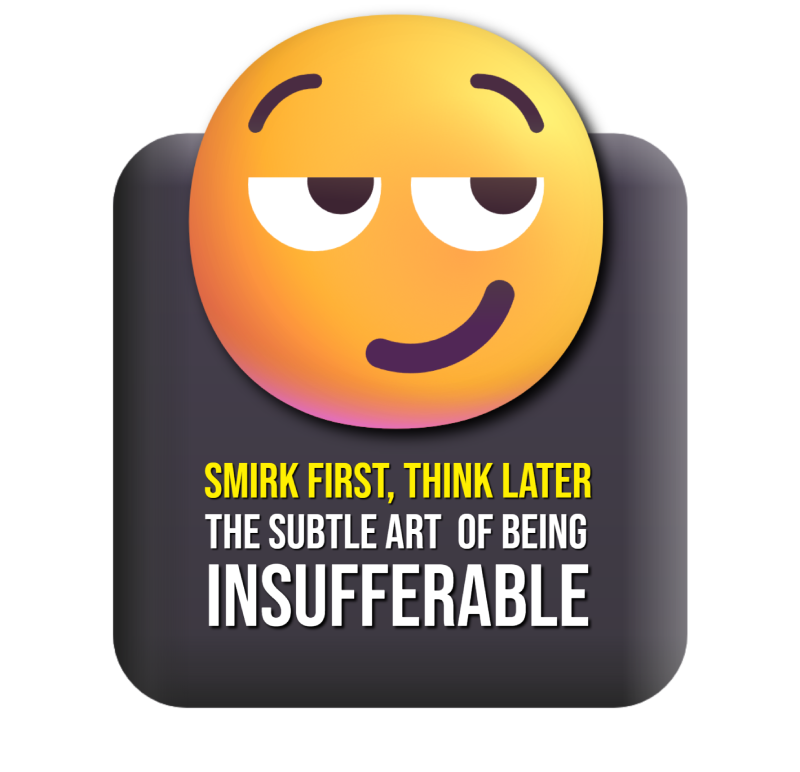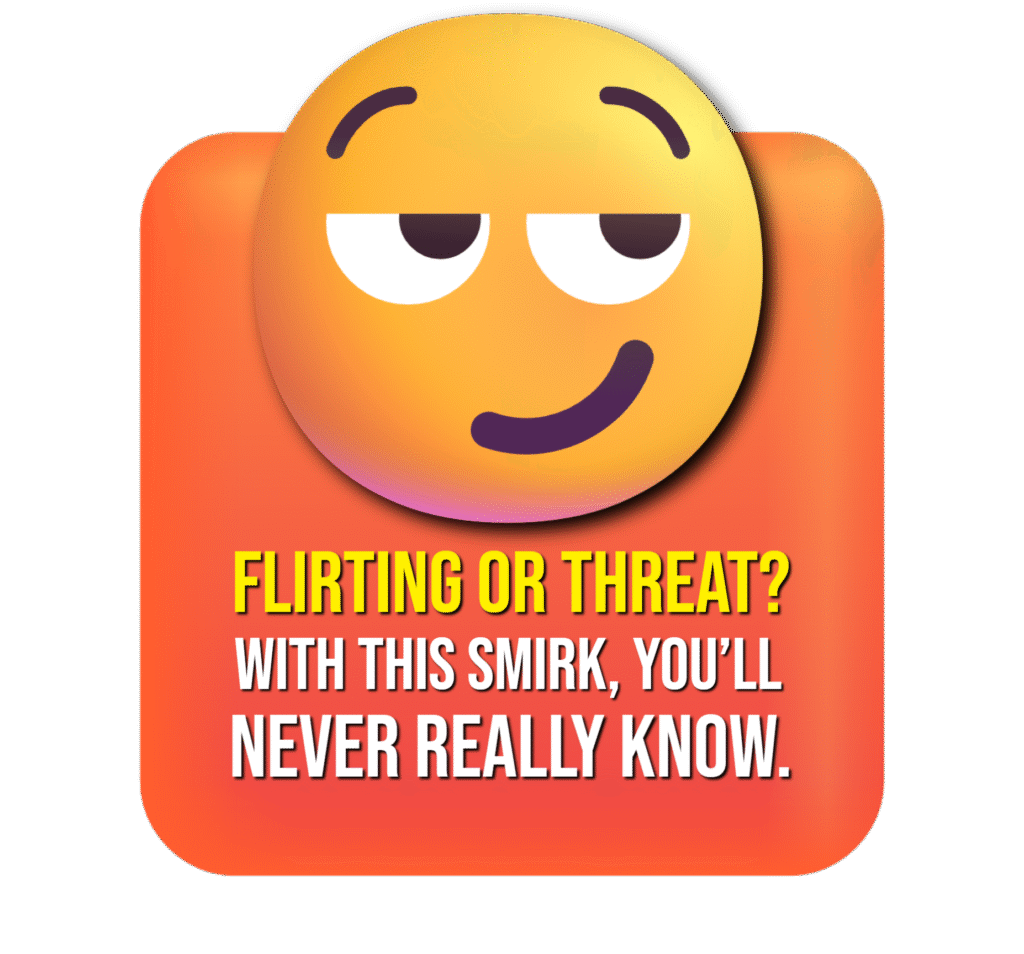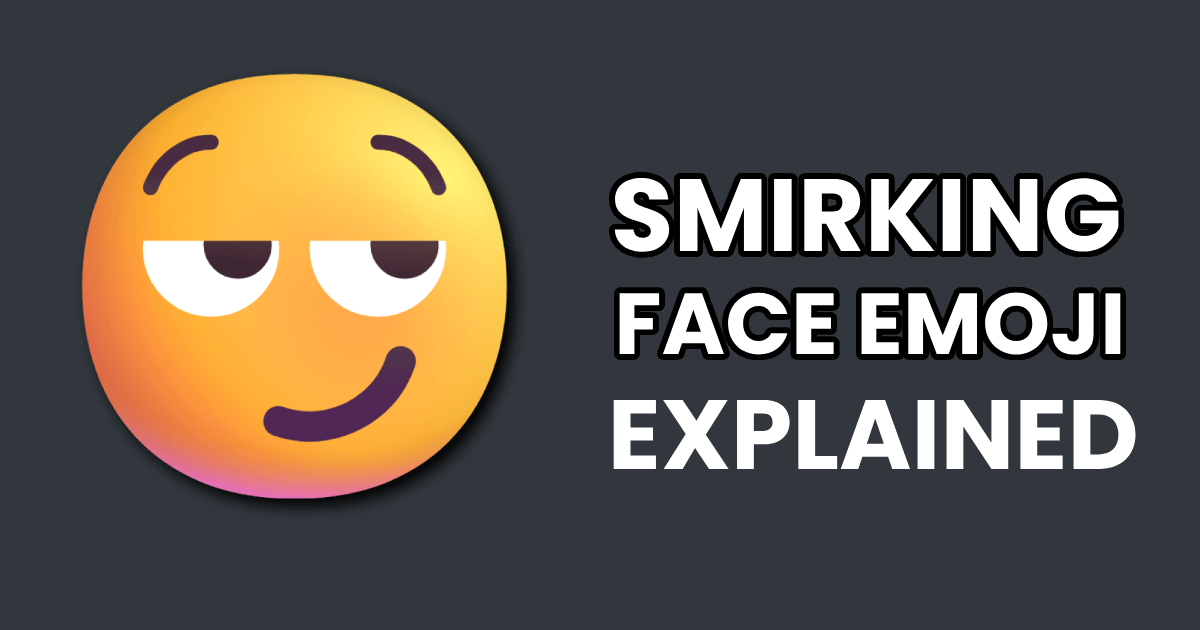The smirking face emoji looks harmless — just a cheeky half-smile with a raised brow. But don’t be fooled. This emoji has become one of the most passive-aggressive, flirtation-masking, context-destroying symbols on the internet. It’s sarcastic, smug, and often misunderstood. In this article, we explore how the smirking face emoji evolved from playful self-satisfaction to passive-aggressive landmine.
Once an innocent little half-smile in a sea of yellow circles, the Smirking Face emoji has spent the last decade transforming into the internet’s most passive-aggressive punctuation mark. It’s the digital equivalent of raising one eyebrow and whispering, “Really?” while swirling a glass of Merlot and watching the world burn. On the surface, it seems polite — maybe even charming. But dig a little deeper, and this emoji is soaked in sarcasm, smugness, and just enough menace to make your inbox feel unsafe. Whether it’s mocking your bad take, flirting badly in your DMs, or setting off HR alarms, the Smirking Face emoji delivers. Unfortunately, it delivers the emotional tone of a villain in a bad breakup text.
What Does the Smirking Face Emoji Officially Mean?
According to Unicode, the Smirking Face emoji is supposed to represent smugness, self-confidence, or satisfaction. That’s the official line. It was introduced in Unicode 6.0 back in 2010, during the glory days of flip phones and snake games. At that time, it was just a lightly amused expression — a sort of sideways shrug with a smirk. Then Apple added a raised eyebrow. With that subtle curve, everything changed. What once suggested modest confidence now oozes condescension.
Each platform gives the Smirking Face emoji a slightly different personality. Apple’s version is the most recognisable: sly, sideways, and clearly judging you. Google’s looks like it’s two seconds away from calling you “chief” in a Slack message. Samsung’s older version looked like it had just eaten glue. These differences shift the tone slightly, but the intent remains: it says more than it types — and what it says isn’t always kind.

From Flirty to Feral: How the Internet Hijacked the Smirking Face Emoji
It didn’t take long for the internet to twist the Smirking Face emoji into something darker. What started as a mild expression quickly evolved into a symbol of sarcasm, superiority, and thirst. Twitter gave it bite. Tumblr gave it flair. Reddit gave it a licence to judge. These platforms took a harmless smile and turned it into the emoji equivalent of a raised eyebrow at a funeral.
Drop it into a reply, and suddenly your message has layers. Post it beneath a humblebrag, and it becomes an eye-roll with pixels. Use it in an argument, and it turns your disagreement into a smug takedown. It’s the emoji of quiet confidence, but also smug dismissal — and that’s precisely why it thrives. People use it to look clever without saying anything clever. And when challenged, they shrug it off with plausible deniability: “What? It’s just a smile.”
The Smirking Face Emoji and Its Complicated Relationship With Consent Culture
Let’s talk about DMs. Specifically, the ones nobody asked for. The Smirking Face emoji has become the calling card of unsolicited flirtation. It pops up in dating apps from guys who list “alpha energy” in their bios. It shows up in Instagram messages from men with usernames like FitnessKing87. And it lives in the replies under posts where no one invited commentary.
Used sparingly, it can suggest charm. Used without self-awareness, it becomes creepy. Its ambiguity is its downfall: the same emoji might mean “I like you” or “I’m about to give a TED talk on emotional manipulation.” And the gender dynamics are glaring. When a woman uses the Smirking Face emoji, it often reads as cheeky or flirty. When a man uses it, it’s more likely to trigger the phrase “red flag” in a group chat. Context is everything — and this emoji refuses to provide any.

When Good Emojis Go Bad: Smirking Face Emoji and the Perils of Context
The Smirking Face emoji is a master of tonal whiplash. Depending on who sends it, and in what context, it can feel playful or predatory. For younger users, it’s a meme weapon. For older users, it might seem like a friendly smile. That’s where things go wrong. A boomer might use it after saying “Sounds fun!” and accidentally imply they’re being sarcastic. A Gen Z user might toss it into a roast and get blocked. The gap between intention and interpretation has never been wider.
Professional communication only makes things worse. Imagine finishing a big collaborative project and getting this reply from your manager: “Looks good 😏.” Are they proud of you? Mocking your effort? Or quietly planning to erase your name from the credits? It’s anyone’s guess. The Smirking Face emoji isn’t a smile — it’s a test. And depending on the recipient’s mood, it fails spectacularly.
What Your Use of the Smirking Face Emoji Says About You
Let’s be honest: if the Smirking Face emoji is one of your go-tos, you’re probably aware of its effect. You might be using it to flirt, to roast, or to perform a brand of ironic detachment that’s starting to age poorly. In some circles, it still works. In others, it announces you as the type of person who “just tells it like it is” — which is code for “makes people uncomfortable at dinner parties.”
For those who use it ironically, the emoji becomes a kind of social camouflage. You’re pretending not to care while carefully curating your digital persona. But many use it without irony, which is where things get bleak. The Smirking Face emoji doesn’t just reflect who you are — it suggests how you want to be seen. And if that’s confident, fine. But if it’s clever, subtle, and emotionally intelligent… maybe try a different emoji.

Should We Retire this Emoji for Good?
Can we reclaim the Smirking Face emoji? Possibly — but it would require a collective agreement to stop using it like a digital sneer. Too much baggage comes attached. Years of memes, awkward flirting, and sarcastic replies have coated it in digital grime. It’s hard to smirk sincerely after a decade of misuse. There’s a difference between confidence and contempt, and the Smirking Face emoji keeps blurring the line.
We’ve got better options now. The Winking Face emoji can carry flirtation without the sleaze. The Relieved Face emoji conveys calm without condescension. The Melting Face emoji is perfect for modern existential dread. Meanwhile, the Smirking Face emoji is still lurking in 2012, quietly judging everyone and everything. Maybe it’s time we moved on.

Conclusion: Smirk Responsibly
This emoji started life as a modest smirk — a tiny, knowing smile for light sarcasm or private jokes. But it’s evolved into something far more complicated. These days, it’s a symbol of smugness, shade, and every bad date that ended in “lol ur loss.” It’s not just an emoji anymore. It’s a whole attitude.
So yes, smirk if you must. But do it with intention. Before your finger taps that little yellow icon, ask yourself: Am I adding something clever to the conversation, or just being a bit of a tool? The answer could save you a lot of awkward screenshots later.
What do you think about the Smirking Face emoji? Harmless fun or red flag in digital form? Drop your thoughts in the comments — or remix it in EZC Emoji Composer and give it a second chance.

